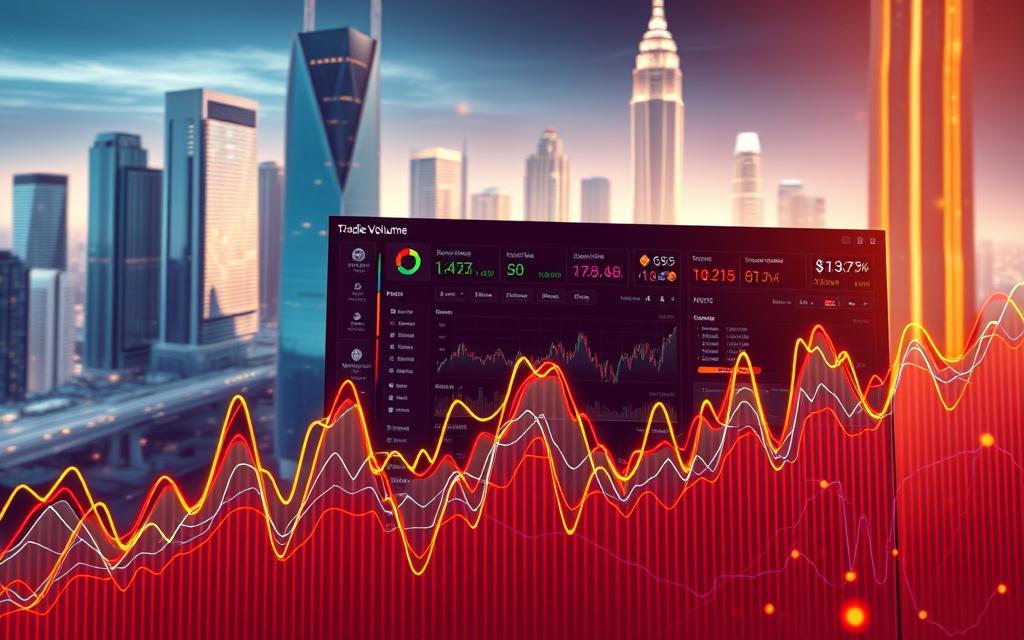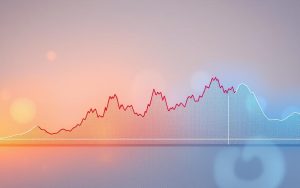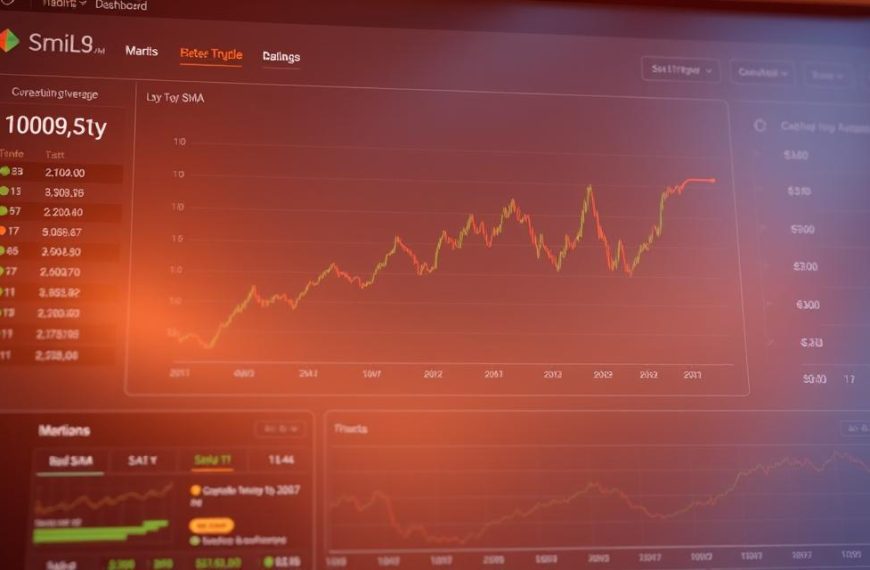Cryptocurrency trading volume is vital for investors in the digital asset world. It shows the total value of crypto transactions in a given time. This metric offers key insights into market trends and sentiment.
Crypto trading volume has seen massive changes recently. Daily volumes have jumped from billions to tens of billions of dollars. By late 2024, Bitcoin’s 24-hour volume topped $33 billion. Tether (USDT) exceeded this with over $60 billion daily.
Volume analysis reveals more than just numbers. It’s a key sign of market health and liquidity. Traders use it to gauge interest and validate price moves.
However, the crypto volume landscape faces challenges. A 2022 Forbes study found over half of Bitcoin trades might be fake. Regulators are working to improve market transparency and protect investors.
Investors must approach crypto volume strategically. Understanding volume can give an edge in this unpredictable market. It helps spot real trends and potential opportunities12.
Understanding Cryptocurrency Trading Volume Basics
Cryptocurrency trading volume is a key metric for grasping market dynamics. It measures the total value of a cryptocurrency traded in a specific timeframe. This metric offers vital insights into market activity and possible price shifts3.
Traders use volume measurement to assess market health and price trends. The link between trading volume and price action can reveal important market patterns4.
Definition and Key Components
Trading volume in crypto markets includes several crucial elements:
- Total monetary amount traded
- Number of transactions
- Trading frequency
- Market participation levels
Measuring Volume in Crypto Markets
Volume measurement often occurs over different time periods. The 24-hour period is the most common. Traders use various tools to understand market momentum4.
Price-Volume Relationship
The link between volume and price is complex. High trading volume often signals potential price movements. Low volume might suggest market uncertainty3.
About 38% of cryptocurrency traders view volume as their main price indicator4.
Volume provides a window into market sentiment and potential price directions.
Markets with significant volume tend to be less volatile. This shows the importance of understanding crypto volume basics3.
What does volume mean in cryptocurrency?
Crypto volume is crucial for grasping digital asset trading dynamics. It shows the total cryptocurrency exchanged between buyers and sellers in a set time. This can be expressed as monetary value or individual units traded.
Trading volume is more than just numbers. It reveals market activity and investor sentiment. Traders use it to spot potential market shifts and trends.
- High trading volume typically indicates heightened market interest5
- Low volume might suggest reduced market participation5
- Volume changes can signal potential price volatility6
Cryptocurrency traders rely on volume for smart decisions. Significant volume changes can reveal trend reversals or new market opportunities.
| Volume Indicator | Market Interpretation |
|---|---|
| Rising Volume | Strong market activity and potential trend confirmation5 |
| Declining Volume | Reduced market interest or potential trend weakness6 |
Grasping crypto volume needs careful analysis and comparison with past averages. Traders must check data from several trustworthy sources. This helps avoid misreading market signals.
The Significance of Trading Volume in Market Analysis
Trading volume is vital in grasping cryptocurrency market dynamics. Investors use volume analysis to understand market health and potential price changes7.
Market health analysis reveals key info about investor sentiment and participation. Trading volume indicates crypto market conditions, aiding traders in decision-making8.
Volume as a Market Health Indicator
Cryptocurrency trading volume offers crucial insights into market activity:
- Higher volumes suggest active trading and strong market interest9
- Volume indicates potential price movements and market trends7
- Changes in volume can signal shifts in investor sentiment8
Volume’s Role in Price Discovery
Volume in price discovery helps set fair market prices by showing real trading activity. Significant volume changes can precede major price movements, making it crucial for trend analysis9.
Using Volume to Confirm Market Trends
Trend confirmation through volume analysis involves several key strategies:
- Examining volume during price increases or decreases9
- Identifying volume clusters at support and resistance levels8
- Comparing volume across different timeframes7
Understanding these volume-based indicators helps traders develop stronger crypto market strategies8.
Common Volume Indicators and Tools
Crypto traders use volume analysis tools to navigate the complex market. These indicators offer crucial insights into market dynamics, helping traders make informed decisions10.
- On-Balance Volume (OBV): A powerful tool that measures buying and selling pressure11. The OBV increases when prices rise and decreases when prices fall, signalling potential market reversals12.
- Money Flow Index (MFI): An oscillator ranging from 0 to 100 that indicates overbought or oversold conditions10. Values above 80 suggest overbought markets, while values below 20 indicate oversold markets12.
- Volume-Weighted Average Price (VWAP): Helps traders understand the average price based on both price and volume11.
“Volume is the fuel that drives market movements” – Crypto Trading Wisdom
Traders use volume analysis tools to confirm market trends. High volume with price movements often shows a strong trend12. Low volume might signal weak market sentiment or possible trend reversals11.
Many trading platforms now include these crypto volume indicators. This makes it easier for traders to analyse markets thoroughly. Learning these tools can boost trading strategies and risk management10.
Volume Analysis Techniques for Traders
Volume pattern analysis is vital for cryptocurrency traders. It offers insights into market dynamics and price movements. Trading volume reveals the strength and direction of market trends13.
Traders use various techniques to interpret volume profile and trading signals. These methods help identify market trends and potential trading points. They allow for more precise decision-making in trading.
Reading Volume Patterns
Volume patterns provide key information about market sentiment. They also indicate potential price movements. Here are crucial aspects to consider:
- Tracking changes in trading volume relative to historical averages13
- Identifying volume spikes that indicate significant market activity14
- Observing correlations between price and volume changes15
Identifying Volume-Based Trading Signals
Traders rely on several indicators for reliable trading signals. These include:
- On Balance Volume (OBV): Measures volume flow and potential price reversals14
- Money Flow Index: Evaluates buying and selling pressure on a 0-100 scale14
- Volume Oscillator: Calculates volume momentum using moving averages13
Volume Profile Analysis Methods
Advanced volume profile analysis reveals price levels with maximum trading activity. It helps traders understand market dynamics better. This technique involves:
- Examining OHLCV data for comprehensive market insights15
- Detecting potential trend reversals through volume patterns14
- Assessing market liquidity and trader sentiment13
Volume analysis is not just about numbers, but understanding the story behind market movements.
The Relationship Between Volume and Market Liquidity
Crypto market liquidity is the ease of trading assets without big price changes. Trading volume is key to grasping market trends and liquidity16. This link shows how to gauge crypto market health and spot trading chances.

- The ability to trade assets without substantial price impact16
- Bid-ask spread narrowness17
- Trading volume intensity18
Cryptocurrencies have different liquidity levels. Bitcoin remains the most liquid cryptocurrency asset16. A $1 million Bitcoin sell order might need $500,000 in buy orders to avoid price slippage16.
Liquidity is not merely about volume, but about the market’s capacity to absorb large trades without dramatic price movements.
Traders can assess liquidity through several indicators:
- Trading volume trends
- Bid-ask spread analysis
- Market depth examination
The link between trading volume and market liquidity is complex. High volumes often show more market activity, but don’t guarantee smooth liquidity16.
Investors must weigh many factors when sizing up cryptocurrency market conditions. This helps them make smarter choices in the ever-changing crypto world.
Volume’s Impact on Trading Strategy Development
Cryptocurrency trading requires advanced risk management and profit maximisation techniques. Volume-based strategies offer vital insights into market dynamics. These insights enable traders to make more informed decisions19.
Volume plays a crucial role in developing robust trading methods. By analysing volume, investors can improve their risk management. They can also optimise their position sizing strategies20.
Determining Entry and Exit Points
Identifying optimal trade points requires careful volume analysis. Traders use volume indicators to achieve this goal.
- Validate price movements
- Confirm trend strength
- Predict potential market reversals20
Risk Management Considerations
Effective risk management depends on understanding volume patterns. Cryptocurrency traders can use volume data for various purposes.
- Set appropriate stop-loss levels
- Assess market liquidity
- Mitigate potential trading risks19
Position Sizing Strategies
Volume-based position sizing helps traders manage capital allocation more effectively. Bitcoin’s substantial liquid backing shows how trading volume affects market stability19.
| Volume Indicator | Trading Strategy Impact |
|---|---|
| Money Flow Index (MFI) | Assesses buying/selling pressure |
| On Balance Volume (OBV) | Confirms price trend strength |
Volume-based trading strategies allow investors to develop more nuanced approaches. These methods help traders respond better to cryptocurrency market changes20.
Conclusion
Trading volume is a key metric in crypto markets. It offers valuable insights into market dynamics. Proper analysis requires sophisticated interpretation beyond basic number tracking21.
Volume analysis provides traders with tools to assess market sentiment. It helps predict potential price movements and make informed decisions22. Professional traders examine volume patterns, liquidity indicators, and market trends.
Volume data reveals crucial market psychology. It shows whether buying or selling pressure dominates the crypto landscape23. Savvy traders use these insights to develop strategies for changing market conditions.
Crypto markets are always evolving. Traders must continually learn and adapt their skills. Raw numbers alone can’t guarantee success in volume analysis21.
Strategic interpretation, technical knowledge, and market awareness are essential. These skills set exceptional crypto traders apart. Investors can turn complex data into actionable strategies through volume analysis22.
Mastering volume analysis is an ongoing journey. It demands dedication, practice, and a willingness to learn from market movements. This approach can lead to more successful trading outcomes.
FAQ
What exactly is trading volume in cryptocurrency markets?
How does trading volume differ from price in cryptocurrency analysis?
Why is trading volume important for cryptocurrency investors?
What are the most reliable volume indicators for crypto trading?
How can traders identify potential trading signals using volume?
What challenges exist in measuring cryptocurrency trading volume?
How does trading volume relate to market liquidity?
Can volume analysis be used across different cryptocurrencies?
What role does volume play in risk management?
How frequently should traders analyse trading volume?
Source Links
- https://crypto.news/what-is-trading-volume-in-crypto/
- https://www.investopedia.com/news/are-cryptos-high-trading-volumes-scam/
- https://learncrypto.com/knowledge-base/how-to-trade-crypto/understanding-crypto-trading-volume
- https://cleartax.in/s/understanding-crypto-trading-volume-its-significance
- https://osl.com/academy/article/understanding-crypto-trading-volume
- https://tangem.com/en/blog/post/trading-volume-crypto/
- https://coinmarketcap.com/academy/glossary/trading-volume
- https://www.coinmetro.com/glossary/average-daily-trading-volume-adtv
- https://www.altrady.com/crypto-trading/technical-analysis/crypto-trading-volume-important-part-price-patterns
- https://blueberrymarkets.com/academy/what-are-volume-indicators-how-to-use-them/
- https://www.altrady.com/crypto-trading/technical-analysis/volume-volatility-indicators
- https://blog.ueex.com/crypto-volume-analysis/
- https://www.litefinance.org/blog/for-beginners/trading-volume/
- https://bitsgap.com/blog/what-is-a-trading-volume-in-cryptocurrency-and-why-is-it-important
- https://www.coinapi.io/blog/understanding-ohlcv-in-market-data-analysis
- https://www.cryptovantage.com/guides/what-does-liquidity-mean-for-cryptocurrency/
- https://corporatefinanceinstitute.com/resources/cryptocurrency/liquidity-in-cryptocurrency/
- https://www.riksbank.se/globalassets/media/rapporter/working-papers/2022/no.-413-trading-volume-and-liquidity-provision-in-cryptocurreny-markets.pdf
- https://phemex.com/academy/what-is-crypto-trading-volume
- https://blog.tothemoon.com/articles/what-does-volume-mean-in-crypto
- https://gamerseo.com/blog/what-is-volume-in-cryptocurrency-and-why-is-it-so-important/
- https://mudrex.com/learn/what-is-volume-in-cryptocurrency/
- https://coinmarketcap.com/academy/article/how-to-maximize-profits-using-trading-volume















